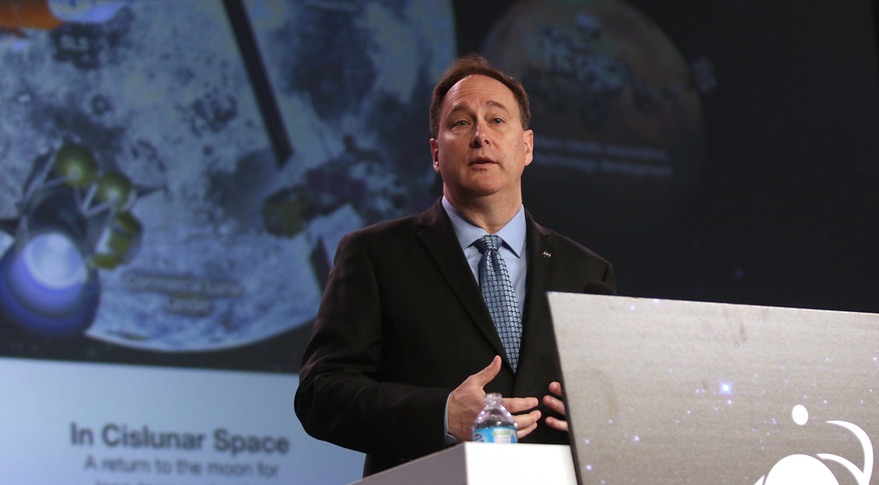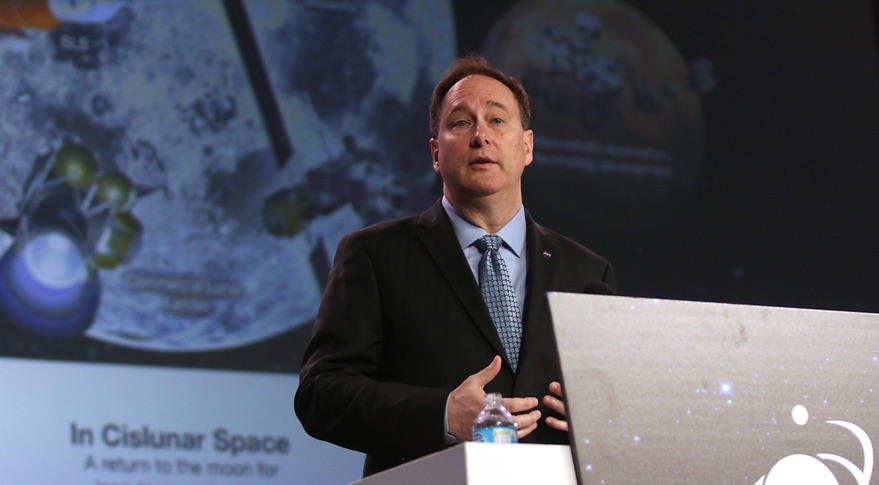
Lockheed Martin Space leader aims to speed things up (Image Credit: Space News)

MOUNTAIN VIEW, Calif. — As soon as he finished his keynote at the Satellite Innovation conference here, Robert Lightfoot was surrounded by entrepreneurs responding to his invitation to explore partnerships.
“Our customers are asking us to move with urgency,” said Lightfoot, who spent 29 years at NASA, rising to the rank of acting administrator, before joining Lockheed Martin Jan. 1 to lead the Space Division. “That means I can’t do everything myself anymore. I’ve got the capability. I just don’t have the time.”
Lightfoot told the audience of entrepreneurs and investors about Lockheed Martin Ventures, a fund the company recently doubled from $200 million to $400 million. About a third of the fund’s venture capital goes to space companies.
“We see an opportunity there and we’re not just looking at the technical piece,” Lightfoot said. “We’re looking at your business models and how we can invest.”
Lockheed Martin Ventures already backs launch vehicle developer ABL Space Systems, communications startup Hedron, Orbit Fab’s Gas Stations in Space, Earth observation company SatelliteVu, satellite manufacturer Terran Orbital, and Xona, a startup focused on secure position, navigation and timing.
After the Oct. 12 keynote, Lightfoot spoke with SpaceNews.
Why did you decide to attend this conference?
It looked like a great opportunity to get connected with some new players in our industry, and to show that we’re here and we want to partner with them going forward. I think a lot of the folks that are here are going to help us solve some of our biggest challenges that we have as a nation, not just as Lockheed Martin, but as a nation. We’d like them to solve those with us.
Is the urgency you mentioned coming from your customers?
Yes. But it’s coming from me, too. Part of my real objective as executive vice president is to remind people that every day matters. That’s what I mean by urgency. When you look at some of the missions we do, it may take three years to build a spacecraft. In month one, that three years looks a long way away. But everybody has to be engaged. Not just the engineering team and the business team, but the contracts team.
You spoke a lot about partnerships and mentioned Terran Orbital.
It’s a good example of us bringing our strengths to help them and them bringing their capabilities to help us. Sometimes, it’s hard to strike that balance. Recently, I was talking to a CEO of a much larger company with a lot of small suppliers and partners, new entrants in their world. The comment that the CEO made was, “It’s my job to make sure my team doesn’t bruise them, that they bruise us.” I thought that was a perfect example of that balance we have to strike.
Years ago, companies worried about being crushed by partnership with aerospace giants.
The strategy that I’m forming is: let’s let them be successful. Don’t take away their advantage. Embrace it, leverage it and feed it so that they can then help us in their own independent way. It’s the way of the future and it’s the way of now. You are going to see it accelerate.
In your keynote, you talked about Lockheed Martin offering services.
Today, our model is we get a big procurement, we go in and we build that. The question becomes, can we build it ourselves and then offer the data, the intelligence? An example is lunar infrastructure. We build communication satellites. Let’s put it up there and anybody that’s going to the moon can use our satellite and pay by the drink. Instead of making someone pay up front, we build it ourselves and then sell it as a service over time. It is a totally different model for Lockheed. Martin, but I think it leverages our capabilities in the best way possible.
It would require significant upfront investment, not the company’s traditional model.
That’s what we’re trying to do. We’re not going to do that everywhere, obviously, but we think it’s right for us to at least see what we can do in that area.
You also discussed plans to fly the LM 400 satellite as part of a technology demonstration strategy. Is the strategy aimed at providing heritage for spacecraft systems?
Well, it’s two things. The first thing is to inject that speed in my own team. We’re going to do these every year. The second is to be able to tell the customer that this core model has flown. One of their big concerns is technical maturity. If I walk in with something that hadn’t flown yet, the customer says, “I’m taking some technical risks.” If I walk in and say it’s flying, the core is flying, I believe they will look at that as a reduction of risks. Not all our tech demos are going to fly. But it’s all about advancing that the technology readiness level of the capability.
Is your approach to international partnerships changing?
A lot of the international partners are looking at what they can do in space. They’re saying to us, “You build these systems for the U.S. Can you build them for us?” In some cases, they’re looking for sovereign or indigenous capability in their countries. If we help an allied country develop that capability, they can be a supplier back to us. When we talk about supply chain challenges, the more suppliers we can have for things, the better off we are. It’s a longer term strategy. I’m going to help them with their near-term problem. But in return, hopefully, they will help me by being a supplier.
A perfect example of that is U.K. space launch. We’re helping them with their first launch from the ground. We work with ABL. ABL is going to be launching from the Shetlands. It’s an exciting time. You start with launch and you work your way back to working on payloads. Then you get back all the way to the universities, where you now have a pipeline for kids who come out of the universities in these countries. They can go into space and they don’t have to leave their countries.








